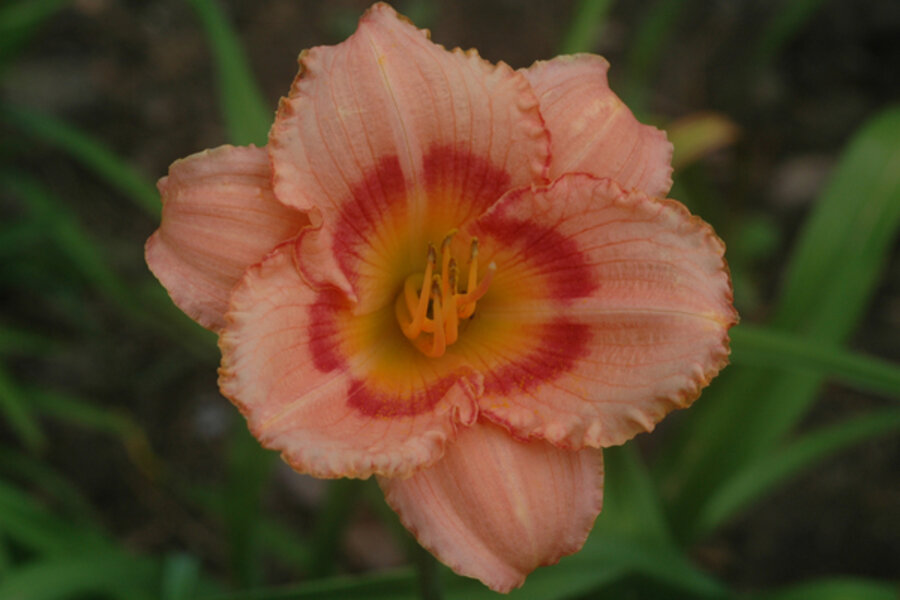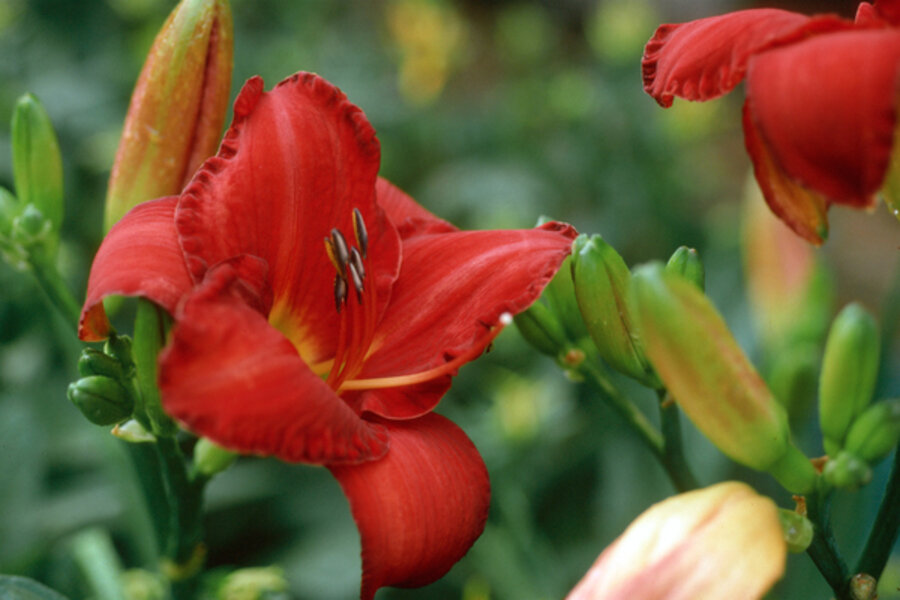Daylilies: The nearly perfect perennial
Loading...
After having fun with the some of the wacky names people give daylilies — see my “Daylilies Are Wonderful Flowers, But, Oh, Their Names,” — I confess that I am a card-carrying member of the Daylily Admiration Society.
Here in Vermont — and nearly everywhere else in North America — there is no perennial that is so easy and rewarding to grow.
Daylilies have many assets
Assets? Daylilies are tolerant and undemanding. They are immune to nearly all pests and diseases. They like sun, fertile soil that drains well, and adequate moisture, but can thrive in much less than ideal conditions. Good neighbors in the garden, they spread easily but not aggressively, and are easy to divide.
More assets? Breeders, beginning in the 1930s with the patron saint of daylilies, Dr. A.B. Stout, have kept busy creating new flower colors, forms, and sizes, as well as better heat- and cold-tolerance.
By increasing the number of chromosome sets in plant cells, hybridizers are giving us sturdier and more vigorous plants with more flowers with more intense colors. With close to 70,000 named cultivars, there are more than enough to choose from unless you’re gardening on a colossal scale.
The daylily’s genus name — Hemerocallis, which means “beauty for a day” in Greek — warns of one liability of this perennial: Each blossom lasts only one day.
Flower scapes, or stems, however, are loaded with buds, so plants normally bloom for a month -- some longer -- and there are extra early, early, mid- and late-blooming cultivars, when means the daylily season can last three months and longer.
To compensate for that one-day characteristic, breeders have created a truckload of reblooming daylilies, cultivars that flower, take a quick breather, and flower again, albeit less generously the second or third time.
They’re also known as everblooming, repeat flowering, recurrrent blooming, continuous blooming, and, wrongly, extended daylilies.
Extended daylilies, such as ‘Strawberry Candy’ [see second photo above; click on arrow at right base of first photo], are cultivars that remain open more than one day, at least 16 hours.
There also are nocturnal daylilies, cultivars that open in the afternoon and close in the morning. ‘Olallie Sandra’, ‘Black-Eyed Stella’, and ‘White Temptation’ are three, making them ideal for moonlight gardeners.
Historically, another mark against daylilies as a group is that they had no fragrance. But savvy breeders also have been at work on this flaw, and now there are a sizable number of fragrant cultivars, including ‘Pretty in Pink’, ‘Betty Davis Eyes’, which is also an extended bloomer, and ‘Bonanza’.
Be warned, though, that old-time favorites like ‘Frans Hals’ [see first photo above] do not smell as good as they look.
Last, there are no pure blue or pure white daylilies. But there are gorgeous reds, purples, pinks, oranges, yellows, golds, creams, and pastels, as well as bicolors galore. Only the most picky colorist — which I am not — would complain.
Good time to plant new daylilies
Why write about daylilies just as most have stopped flowering? As long as they have time to establish their roots before the ground freezes, daylilies are happy to be planted in late summer and fall. And this is the time that plants at local nurseries — and at some nursery websites — go on sale.
You’ll have to travel to a local daylily specialist or go online to find more that the “usual suspects” such as Stella De Oro (often sold as Stella d’Oro), which almost everyone agrees is overplanted.
There are scores of daylily nurseries throughout the country, from California Daylilies to Plum Hill Farm Daylilies in Wisconsin to Tranquil Lake Nursery in Massachusetts to Joiner Daylily Gardens in Georgia and Sample Gardens in Florida.
The list of nurseries on The American Hemerocallis Society website is a good place to begin looking for a daylily source near you, or use Google and enter “daylily” and your state.
I’m fortunate to have great sources in Vermont, including The Vermont Flower Farm and Olallie Daylily Gardens, where they not only grow close to 3,000 different cultivars but also breed daylilies..
Specialist daylily nurseries are the best source of reliable information as well as large, healthy bare-root plants. (Word to the wise: You don’t need to buy potted plants!)
If your budget is limited, take a look at the at the website of that old faithful of peonies, daylilies, and hostas, Gilbert H. Wild & Son. A Missouri nursery begun in 1885, Wild doesn’t offer all the newest names but has great prices for several hundred first-rate daylilies. For example, ‘Happy Returns’, a canary yellow offspring of ‘Stella d’Oro’, is $2; it’s $9 or more at most of the specialist nurseries. ‘Chicago Apache’ is $2.50 at Wild’s, $15 at a daylily specialist. Wild’s has a sale going on right now.
-----
Karan Davis Cutler blogs regularly at Diggin’ It. To read more, click here. She's a former magazine editor and newspaper columnist and the author of scores of garden articles and more than a dozen books, including “Burpee - The Complete Flower Gardener” and “Herb Gardening for Dummies.” Karan now struggles to garden in the unyieldingly dense clay of Addison County, Vt., on the shore of Lake Champlain, where she is working on a book about gardening to attract birds and other wildlife.







